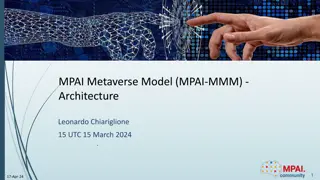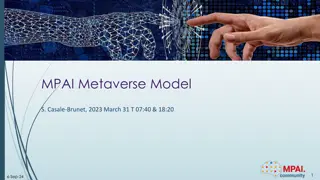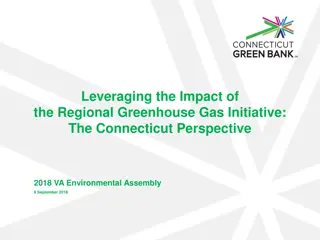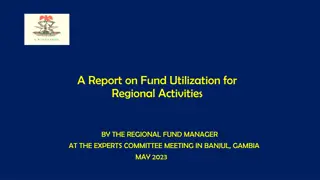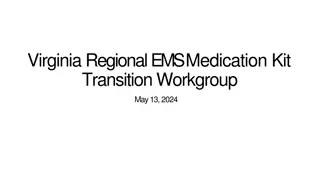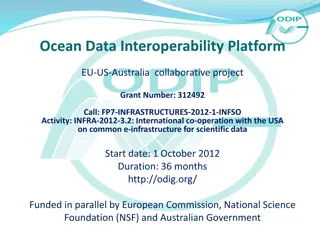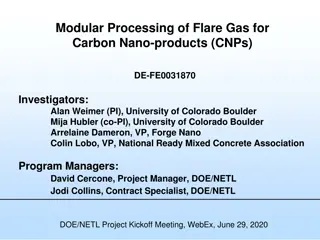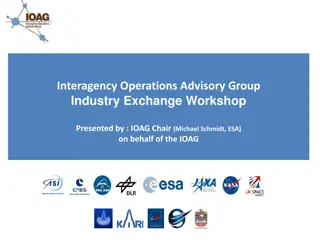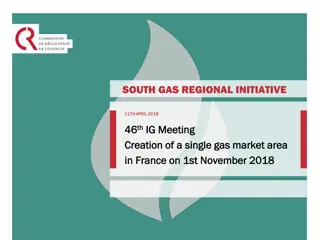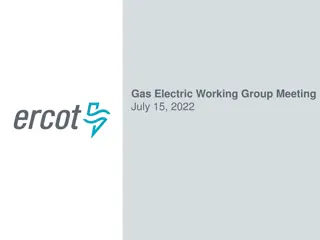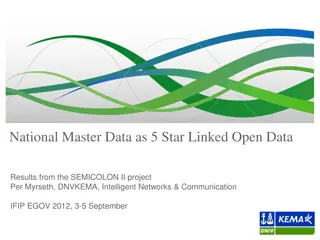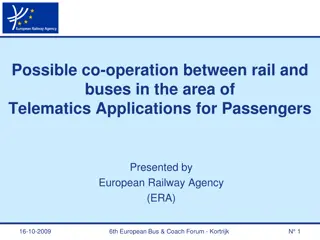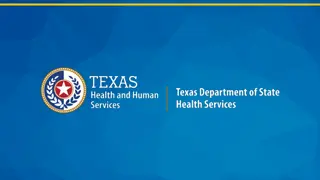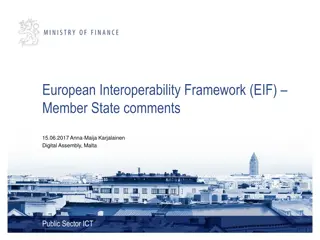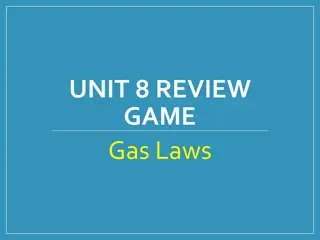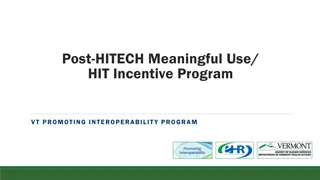Meeting Summary: Interoperability and Gas Quality in Gas Regional Initiative
Discussion highlights from the 38th IG Meeting of the South Gas Regional Initiative teleconference held on July 18, 2016. Focus on interoperability, latest developments, and next steps in the region. Key topics include Interconnection Agreement requirements, gas flow control, gas quantity allocation, dispute settlement, and gas quality standards. Emphasis on ensuring efficient communication procedures, data exchange solutions, and adherence to operational balancing accounts.
Download Presentation

Please find below an Image/Link to download the presentation.
The content on the website is provided AS IS for your information and personal use only. It may not be sold, licensed, or shared on other websites without obtaining consent from the author.If you encounter any issues during the download, it is possible that the publisher has removed the file from their server.
You are allowed to download the files provided on this website for personal or commercial use, subject to the condition that they are used lawfully. All files are the property of their respective owners.
The content on the website is provided AS IS for your information and personal use only. It may not be sold, licensed, or shared on other websites without obtaining consent from the author.
E N D
Presentation Transcript
38th IG Meeting South Gas Regional Initiative 18thJuly 2016 Teleconference 1
Agenda 2
III. Interoperability NC. Latest developments and next steps in the Region IA for VIP Pirineos already received IA for VIP Ib rico committed by the end of July Issues to be addressed in the IA: Interconnection Agreement: Each IP TSOs must ensure: Rules for flow control. Measurement principles for gas & quality Rules for the matching process Rules for allocation of gas quantities Communication procedures in exceptional events Settlement of disputes Amendment process of Interconnection Agreement Common data exchange solutions 3
III. Interoperability NC. Latest developments and next steps in the Region IA for VIP Pirineos already received IA for VIP Ib rico committed by the end of July Issues to be addressed in the IA: Interconnection Agreement: Each IP TSOs must ensure: Rules for flow control. Designate the TSO who is responsible for steering the gas flow across IP. Matching process. OBA correction Flow control arrangements. Quantity of gas. Measurement principles for gas & quality Description of the metering station Gas quality parameters and ranges. Data validation. Data frequency and content Signals and alarms Access to measurement facility, verification, modification, calibration, etc. Etc. 4
III. Interoperability NC. Latest developments and next steps in the Region IA for VIP Pirineos already received IA for VIP Ib rico committed by the end of July Issues to be addressed in the IA: Interconnection Agreement: Each IP TSOs must ensure: Rules for the matching process: Rules of the communication and processing Matching rule for nominations and renominations Provision of data exchange for the matching process Rules for allocation of gas quantities Operational Balancing Account: as close to zero as possible. OBA takes into account characteristics of IP, linepack, capacities, gas flow dynamics. If other rule different to OBA is followed this rule must be published and network users are invited to comment. 5
III. Interoperability NC. Latest developments and next steps in the Region IA for VIP Pirineos already received IA for VIP Ib rico committed by the end of July Issues to be addressed in the IA: Interconnection Agreement: Each IP TSOs must ensure: Communication procedures in exceptional events Possible impact on quantities and quality Possible impact on confirmed quantities Expected and actual end of the exceptional event Settlement of disputes. Amendment process Gas quality Data Publication. (Art. 16) Once per hour during the gas day (Wobbe index and GCV) every IP. Data availability, for so long? Information provision on short term gas quality variation. (Art. 17) List of parties to receive gas quality information. Common data exchange solutions (Art. 20 to 24) Document based data exchange Integrated data exchange Interactive data exchange 6
II. Interoperability NC. Implementation Implementation Interconnection Agreement (TSO): Interconnection Agreement Template : published on 11th April 2016 Committed deadlines: France-Spain. IA at the end of June 2016 + 2 months of public consultation sent by email on 15th July Portugal-Spain. IA at the end of July 2016 + 2 months of public consultation Other adaptations to the IO NC (TSO) NRAs assessment of the information received by the end of September (one month since formal communication). Following positive evaluation: publication on the TSO s web site. 7
III. Interoperability NC. Latest developments and next steps in the Region (for information by TSOs) 8
III. Balancing NC. Status of the implementation (for information by NRAs and TSOs) Spain CNMC s Circular 2/2015 establishing the balancing rules in the transmission network system Jul. 2015 (Oct. 2016) Issues already developed: 1st Nov 2015: Information provision by users Rules for nomination/renominations 16th December 2015: Come into operation the trading platform: MIBGAS 1st March 2016: Procedure for accreditation of users 12nd May 2016: Methodology of imbalance prices, neutrality charges and invoicing procedure - CNMC Resolution https://www.cnmc.es/es- es/energ%C3%ADa/circularesenerg%C3%ADa.aspx?udt_2808_param_detail=48404 9
III. Balancing NC. Status of the implementation (for information by NRAs and TSOs) Spain Issues to be published soon: Guarantees to cover possible imbalances CNMC non binding report submitted to the Ministry in June. Pending of Ministry s Resolution Incentives for TSO to use balancing actions efficiently - to be approved by CNMC (by the end of 2016). Parameters to define when a TSO balancing action is required to be approved by the Ministry. A draft has been produced by the TSO (by 1st October 2016). 10
III. Balancing NC. Status of the implementation (for information by NRAs and TSOs) (for information TSOs) 11
IV. Regional integration of gas markets IV.1 MIBGAS: ongoing developments (for discussion) Iberian market integration: Portugal to incorporate MIBGAS exchange Short term target: implementation of implicit allocation mechanism with cross border tariffs Long term target: implementation of a trading region model Issues to be tackled: How much capacity put aside for implicit allocation Which kind of products? Daily/intraday/monthly? Coordination of explicit/implicit allocation mechanisms Interaction of implicit allocation with regulation in place (CAM, CMP, balancing and nominations/renominations) 2 bilateral meetings between Spain and Portugal have been already held: 22 of June and 7 of July 12
IV. Regional integration of gas markets IV.1 MIBGAS: ongoing developments (for discussion) Iberian market integration Specific TF working on the necessary developments: To accommodate MIBGAS market rules to introduce the Portuguese balancing point and the implicit allocation mechanism among the Spanish and Portuguese balancing points. (Proposal presented by MIBGAS under discussion). To revise the Capacity Allocation Mechanisms (CAM rules) for the entry exit capacity at the Iberian Virtual Interconnection Point, to include the implicit allocation mechanism (Responsible of proposal: ENAGAS and REN). To elaborate a proposal of procedures of communication among MIBGAS and the TSOs, regarding the availability of capacity and the allocation of capacity thought MIBGAS. (Responsible: REN, ENAGAS, and MIBGAS). To analyse and recommend other regulatory changes in order to facilitate the functioning of the implicit allocation model. (Responsible: ENAGAS, REN and MIBGAS). 13
IV. Regional integration of gas markets IV.2 The way forward (for discussion) Market integration Two approaches in the Region: France & Spain: continue with the harmonisation process of network codes, supervision, etc. Portugal & Spain: further integration. Wholesale gas market with implicit allocation. 14
VI. Proposals for the SGRI new Work Plan Work Plan 2017-2018 I. First target: about the use of infrastructures in the Region: Assessment of the use of interconnections in the Region from the implementation of the Network Codes: from 1st October 2014 to 30th September 2016. 1. The current situation of gas interconnections in the Region. Capacities Flows 2. The use of the gas interconnections. Booked capacities. Capacity used. Available capacities. 3. Assessment of the capacity implementation of the CAM network code. allocated since the 15
VI. Proposals for the SGRI new Work Plan I. First target: about the use of infrastructures in the Region (Cont.): 4. Assessment of the gas flows and the congestion status. Analysis of the VIP s congestion status. Use of anti-hoarding mechanisms in the region. Assessment of the CMP implementation. 5. Recommendations For the allocation of capacity. For the congestion management. 6. Conclusions. Deliverable Deadline: March 2017 16
VI. Proposals for the SGRI new Work Plan II. Second target: about gas Balancing regimes in the region: Follow-up of the Balancing regimes at national levels and in the interconnections. Assessment about unbalancing volumes, costs, number of TSO balancing actions, etc. (from 1st October 2017 to 30th September 2017): 1. Sharing information in the region: NRAs will do the index and contents of the template report. Every TSO will complete the report about their own balancing zone. 2. NRAs and TSOs will do a synthesis how the different balancing regimes are working the SGRI. Deliverable Deadline: December 2017 17
VI. Proposals for the SGRI new Work Plan III Third target: Market integration 1. Next steps to further market integration: Iberia. To accommodate MIBGAS market rules. To revise CAM rules at the Iberian VIP to accommodate implicit allocation mechanism. To elaborate a procedures among MIBGAS and TSOs. To implement the model. Deadline: According to Iberian gas deadlines. proposal of communication 18
VI. Proposals for the SGRI new Work Plan III Third target: Market integration 1. Next steps to further market integration: Iberia with France a) NRAs will analyse market rules (exchange) of every market. b) NRAs will assess market prices behavior. c) NRAs will make some recommendations and conclusions. Deliverable Deadlines: a) March 2017 b) October 2017 c) December 2017 19
VI. Proposals for the SGRI new Work Plan IV. Fourth target: Tariffs 1. TSO s assessment of the current cross border transmission tariffs. 2. NRAs analysis and conclusions. Deliverable Deadlines: 1) December 2017 2) June 2018 20
VI. Proposals for the SGRI new Work Plan V. Fifth target: Infrastructures. 1. TSO s TYNDP proposal. 2. NRA s assessment. Deliverable Deadlines: according to the PCI process 21
VI. Proposals for the SGRI new Work Plan VI. Sixth target: Other possible pending issues: 1. Interoperability. Follow up of the implementation of the job done in 2016. 2. OSBB Follow up of the implementation of the job done in 2016. 22
VI. AOB 23
VII. Calendar for the next meetings Next meetings: 4thOctober 2016 24


